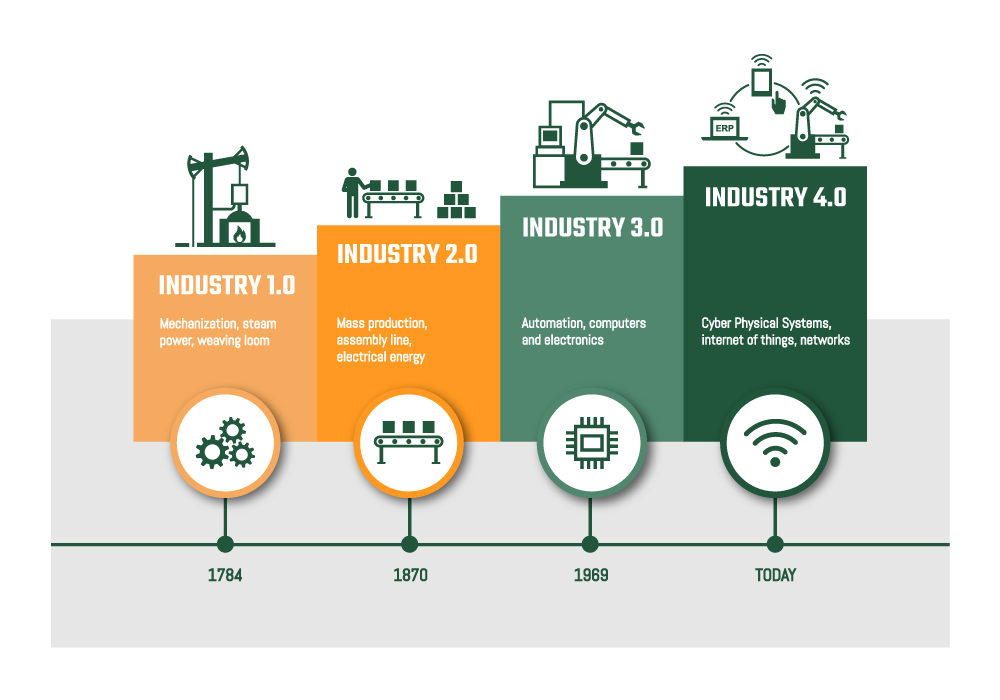INDUSTRY 4.0
While the first industrial revolution began in the early 1770s focussed on machines running on steam and water. Industry 2.0 initiated by the introduction of electricity that further raised productivity. Industry 3.0 initiated with the introduction of computers and automation by the 1970s.
Industry 4.0 refers to the adoption of technologies like artificial intelligence, augmented reality, internet of things and cloud computing, to create a network of computerized machines able to pass information among each other.

Connected machines will interact, visualize the production
chain, and make decisions automatically and autonomously. The nine main pillars
of industry 4.0 are:
1) Internet of Things – IOT refers to Networking and
connectivity of smart devices that allow smooth and continuous transmission of
data.
2) Augmented Reality - Augmented reality (AR) displays
digital content in the real word through a device, such as a mobile phone or
special eyeglasses.
3) Simulations

5) System Integration With improved system integration,
companies can become more interconnected both externally and internally. This
will result in an agile manufacturing environment allowing real time production
corrections and quick pivots.
6) Cloud Computing As the use of technology and data
sharing at manufacturing companies grows, cloud computing provides scalable
storage and increased computing power. The cloud also improves data
accessibility and integrity, helping to eliminate data silos.
7) Autonomous Systems While the manufacturing industry has
made great strides when it comes to automation over the last few years, there
is still a lot of untapped opportunity. Collaborative robots are designed to
fill the gaps between traditional robots and human workers and open up new
areas for automation.

8) Cybersecurity As connectivity increases, the risk
of a potential cyberattack grows alongside it. Any security breach could damage
multiple areas of the business, from supply chain to operations. It’s
absolutely critical that companies prepare and protect their information
systems and production lines from cyberthreats.
Big Data Analytics The common theme among all of these pillars and new technologies is data collection and analysis. There are massive amounts of untapped data in the manufacturing industry, and we are just beginning to scratch the surface.


Good bro....
ReplyDeleteVery nice bro... But can u please manage content to zoom out.. i am not able to study whole
ReplyDeleteyes I will surely do it
Delete